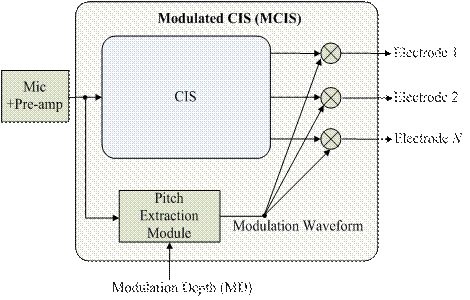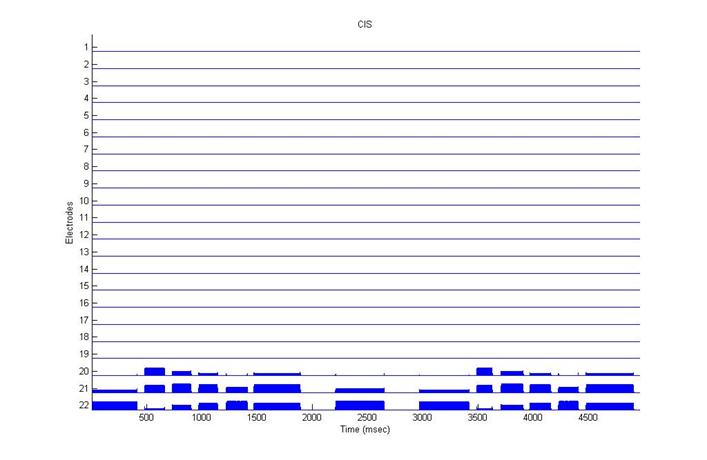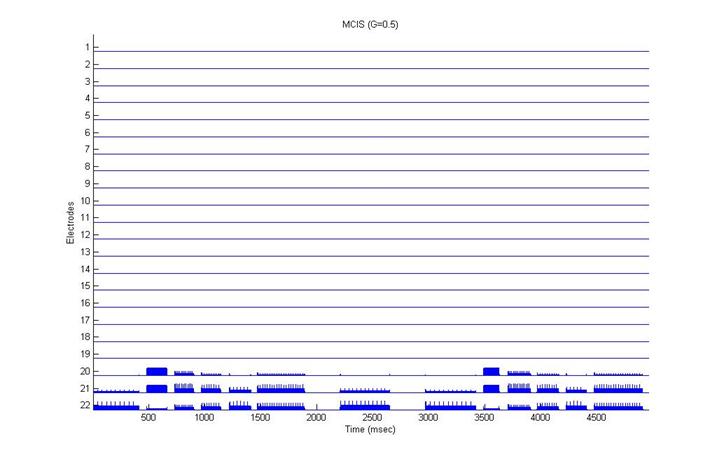
Duo Zhang – duoz@uci.edu
University of California, Irvine
Irvine, California, USA
Fan-Gang Zeng – fzeng@uci.edu
University of California, Irvine
Irvine, California, USA
Bishnu Atal - bsatal@bishnu.net
University of Washington
Seattle, Washington, USA
Popular version of paper http://asa.aip.org/web2/asa/abstracts/search.may11/asa1190.html Presented Friday Morning, May 27, 2011
Time: 11:15
Location: Univ. of Washington, Seattle, WA 981952500
Acoustical Society of America Meeting, Seattle, Washington
Combining a classical perceptual phenomenon and a modern cell phone invention could improve cochlear implant users’ ability to recognize familiar melodies.
More than 200,000 hearing-impaired people worldwide have received the cochlear implant, an electronic device that bypasses damaged inner ear to stimulate the residual auditory nerve for restoration of hearing. The majority of these cochlear implant users can understand speech, including the ability to carry a conversation over telephone, but cannot recognize simple melodies between “Mary had a little lamb” and “Twinkle, twinkle, little stars” if the rhythmic cue is taken out.
Spectral constancy is a classical perceptual phenomenon where changes in intensity affect loudness but not the spectral content, or speech identity. For example, a vowel “a” still sounds like an “a” independent of its intensity. If we can make the change in intensity periodic, exactly in synchronization with voice or music pitch, then we can not only encode the voice pitch or music melody but also keep the spectral content intact.
To extract and transmit the pitch, we employed a modern cell phone algorithm called Code-Excited-Linear-Prediction (CELP). We combined the CELP with spectral constancy and implemented a new algorithm in cochlear implants that encodes pitch while preserving spectral content. We evaluated this combined technology in 10 cochlear-implant users and observed significantly improved melody recognition.
With advances in smartphones and telecommunication, future cochlear implants can be integrated as part of the communication device to allow enhanced functionalities from improved performance to convenient communication.
Fig.1-(a)

Fig. 1-(b)

Figure 1. A sketch of combining spectral constancy and CELP for improved cochlear implant performance, wherein 1-(a) is a block diagram of the classical Continuous Interleaved Sampling (CIS) strategy, and 1-(b) is the new strategy of Modulated Continuous Interleaved Sampling (MCIS).
Music Sample (Temporal waveform of a melody “Take me out to the ball game”)


Figure 2-(a). Electrodogram of CIS Strategy in Cochlear Implants, when the input sound is the melody “Take me out to the ball game”.

Figure 2-(b). Electrodogram of Modulated CIS strategy (modulation depth=0.5) at a Cochlear Implant output, when the input sound is the melody “Take me out to the ball game”.